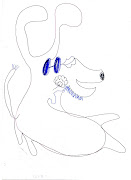okay here's my new edited belbin's and the executive summary we did the previous meeting~
love, kaela=)
Belbin’s team roles
Over the term our group has been working together efficiently, having regular meetings, delegating tasks and completing them according to the time logbook.
Belbin’s team roles model points out nine team roles that should be engaged to heighten team performance. (McShane and Travaglione, 2007)Within our group, we identified how each member played a certain role from the model, such as the conductor, team worker, implementer and monitor evaluator. Despite that, we did not limit ourselves to specifically fulfilling that role, but instead engaged in an overlapping of roles to further encourage and advise one another.
Positive and Negative Norms
Initially there were a few negative norms such as conflicting ideas. However, we have learnt to turn our setbacks into opportunities. We decided to not only reach a state of compromise, but a state of problem-solving, where we carefully evaluate and think of ways to integrate and expand on every suggestion made.
Additionally, in order to increase the efficiency of communication, our group created an online blog where we regularly update our completed tasks, the logbook and ask for advice or suggestions. Being able to view the other members’ work while working on an individual task gives us the ability to work in sync effectively.
Executive summary
Our report explores the issues apparent in Aluminiun Elements Corporation (AEC) and our team evaluation. Problems we identified communication-related such as structural barriers and perception differences, information overload, and filtering and language barriers. These problems lead to conflicts and misunderstandings within AEC. Some solutions we put forth include active listening, direct communication, and motivation of staff.
Through our working together, our team has not only identified our strengths and weaknesses, problem solving was put in place as we transformed challenges into valuable opportunities. Some problems faced were issues of punctuality, conflicting ideas and difficulty in arranging meetings due to personal commitments. In order to achieve team effectiveness, we came up with solutions such as giving priority to our meetings and arranging them at more convenient timeslots. Strengths of individual members were recognised and optimised with rotating leadership with regards to various subject areas. Team effectiveness and objectives were attained.
Wednesday, September 5, 2007
Subscribe to:
Post Comments (Atom)

No comments:
Post a Comment